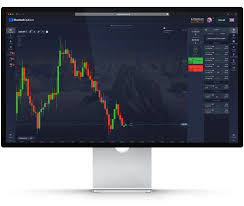
Bollinger Bands Wave Strategy
The Bollinger Bands Wave Strategy is an innovative approach to trading that merges the principles of Bollinger Bands with wave analysis, providing traders with a robust toolkit for navigating the financial markets. This strategy emphasizes understanding market volatility and price fluctuations, allowing traders to make informed decisions based on well-defined patterns. For more insights and a detailed guide, visit Bollinger Bands Wave Strategy https://pocket-option.guide/volnovaya-strategiya-bollinger-bands/.
Understanding Bollinger Bands
Bollinger Bands, developed by John Bollinger, are a popular technical analysis tool that consists of three lines: the middle line is a simple moving average (SMA), while the upper and lower bands are two standard deviations away from the SMA. This creates a dynamic range that adjusts to market volatility. The key concepts to understand about Bollinger Bands are:
- Volatility: The bands widen when the market is volatile and contract when the market is stable.
- Price Action: Price often tends to bounce between the upper and lower bands, creating potential trading signals.
- Market Conditions: A breakout above the upper band may signal a bullish trend, while a breakout below the lower band may indicate a bearish trend.
The Basics of Wave Analysis
Wave analysis, rooted in the Elliott Wave theory, posits that markets move in predictable waves created by investor psychology and market sentiment. Understanding wave patterns can significantly enhance the Bollinger Bands trading strategy. Key aspects of wave analysis include:
- Wave Patterns: Price movements typically form five-wave patterns in the direction of the trend, followed by three corrective waves.
- Trend Identification: Recognizing the current wave can assist traders in determining entry and exit points.
- Fibonacci Levels: Many traders use Fibonacci retracement levels to identify potential reversal points in waves.
Integrating Bollinger Bands with Wave Analysis
The integration of Bollinger Bands with wave analysis creates a powerful trading strategy. Here’s how traders can effectively combine these tools:
Identifying Trend Direction

First, use Bollinger Bands to gauge the current volatility and trend direction. A price consistently closing above the upper band typically indicates an uptrend, while prices closing below the lower band suggest a downtrend. Once the trend direction is established using the bands, traders can apply wave analysis to identify the specific wave structure within that trend.
Entry and Exit Points
With the wave structure identified, traders can pinpoint entry and exit points. For example, if a trader recognizes that the market is in an upward wave and the price approaches the lower Bollinger Band, it might present a strong buying opportunity. Conversely, if the price is at the upper band during a downtrend, it may signal a selling opportunity.
Risk Management
As with any trading strategy, risk management is crucial in the Bollinger Bands Wave Strategy. Traders should set stop-loss orders based on recent wave lows or highs, using the Bollinger Bands as a dynamic reference for price behavior. Additionally, understanding the overall market context can help traders avoid false signals.
Backtesting and Practice
Before implementing the Bollinger Bands Wave Strategy in live trading, it is essential to backtest the approach using historical data. This helps traders identify its effectiveness in various market conditions and refine their techniques. Additionally, practicing on demo accounts can provide invaluable experience without risking real capital.
Common Challenges and Solutions
While the Bollinger Bands Wave Strategy offers promising opportunities, traders may encounter challenges:
- False Breakouts: Markets can experience false breakouts, leading to potential losses. To mitigate this, traders can wait for confirmation signals before entering trades.
- Adapting to Market Conditions: Market conditions vary significantly, requiring traders to adapt their strategies. Continuous learning and experience in different market scenarios are vital.
- Cognitive Biases: Emotional and cognitive biases can cloud judgment. Maintaining a disciplined trading routine and adhering to predefined strategies can help overcome biases.
Conclusion
The Bollinger Bands Wave Strategy provides traders with an effective framework for analyzing market behavior and making informed trading decisions. By leveraging the strengths of both Bollinger Bands and wave analysis, traders can enhance their ability to identify trends, pinpoint entry and exit points, and manage risk effectively. As with any trading strategy, continuous practice, backtesting, and adaptation to changing market conditions will contribute to long-term success.